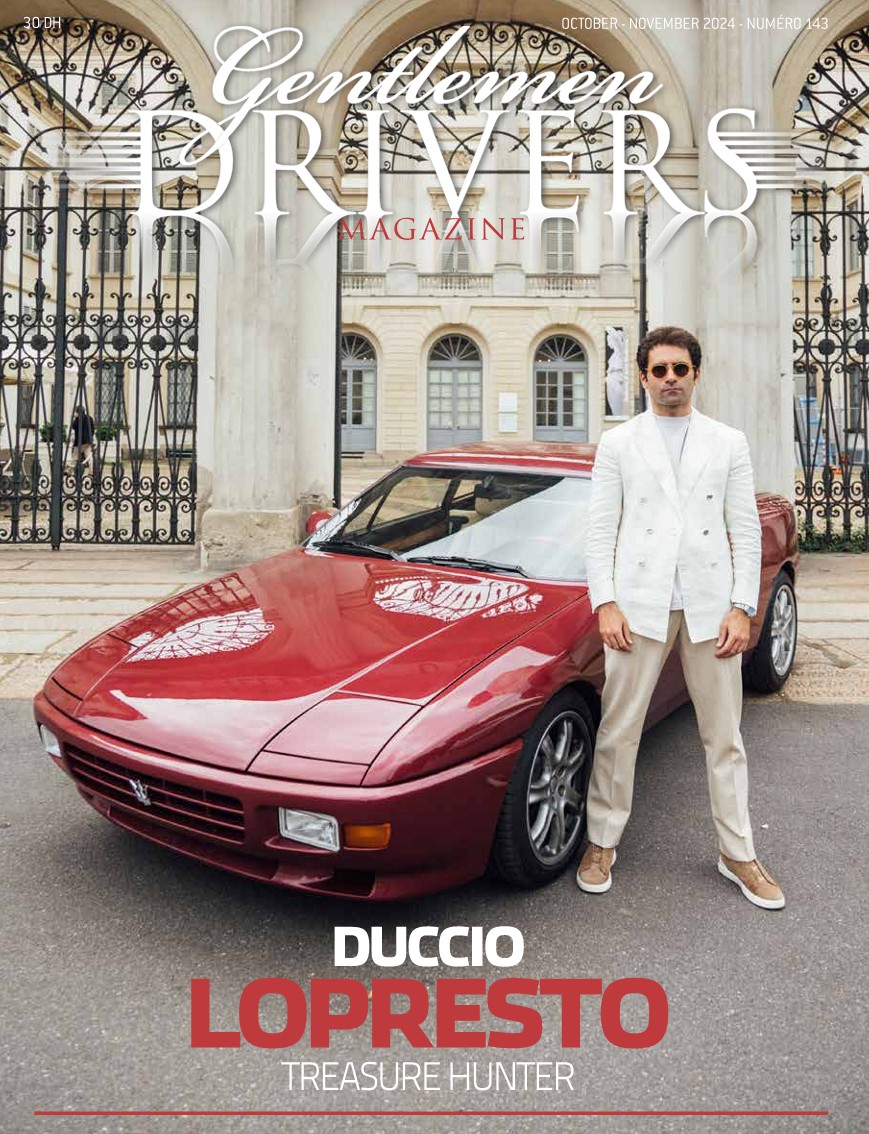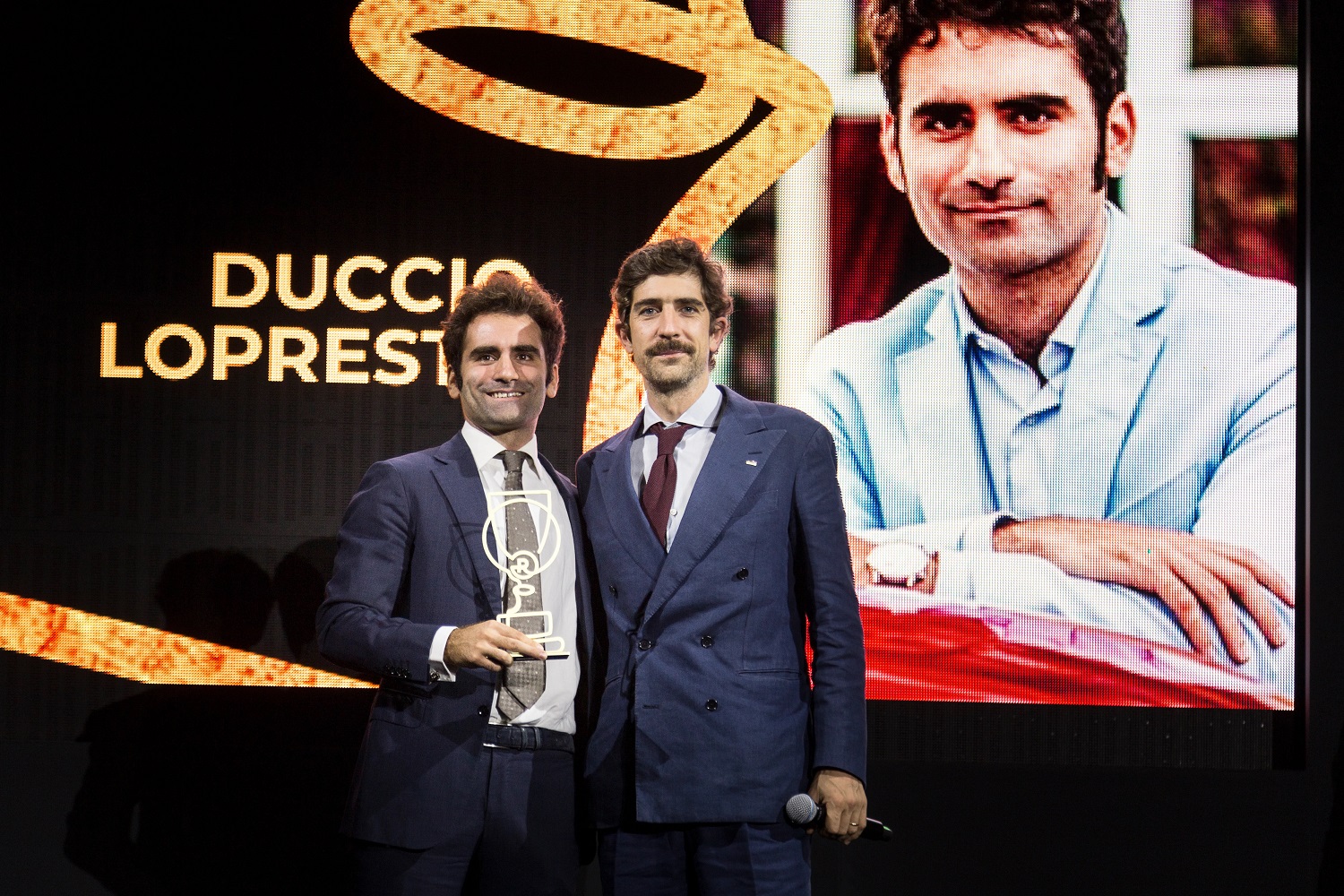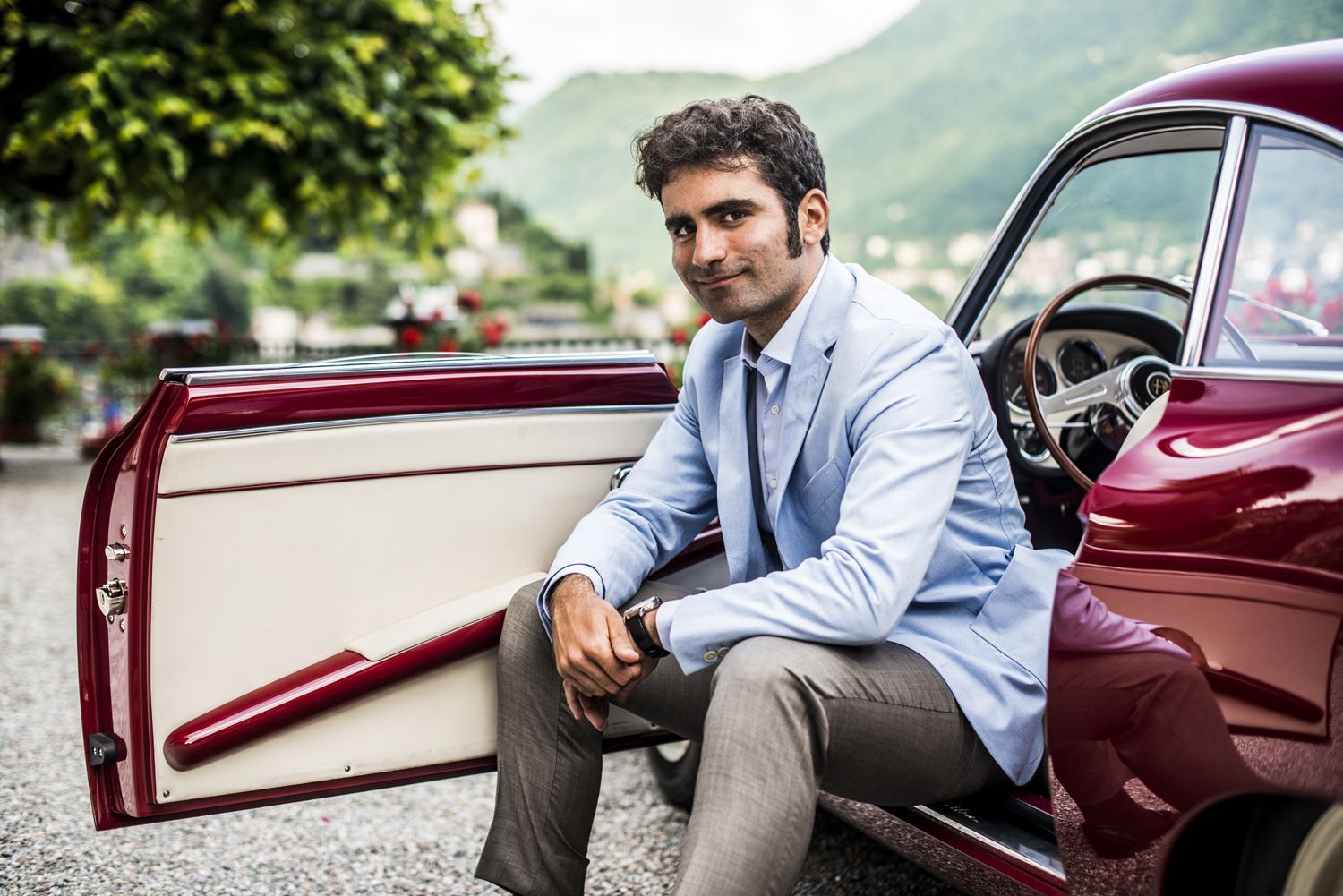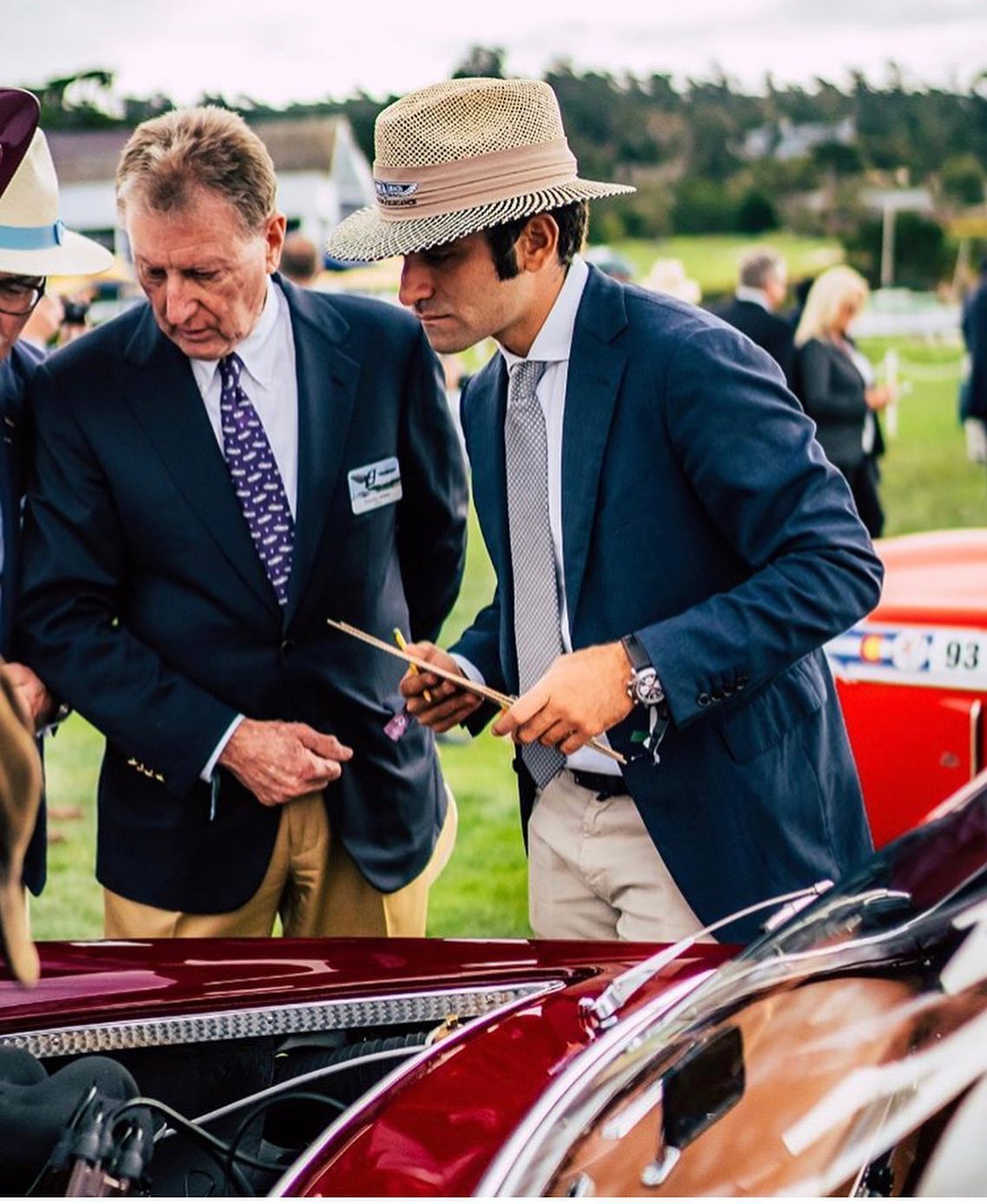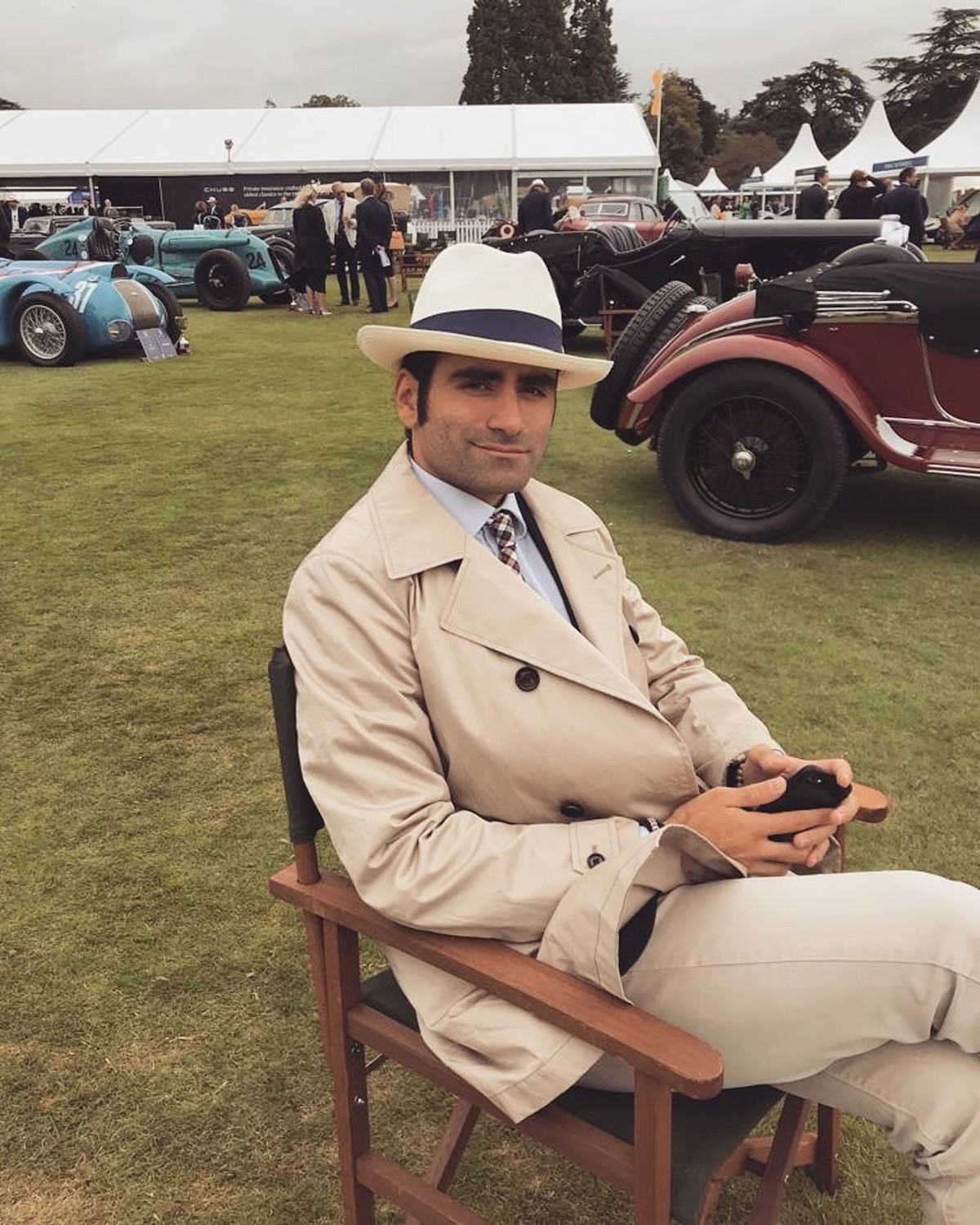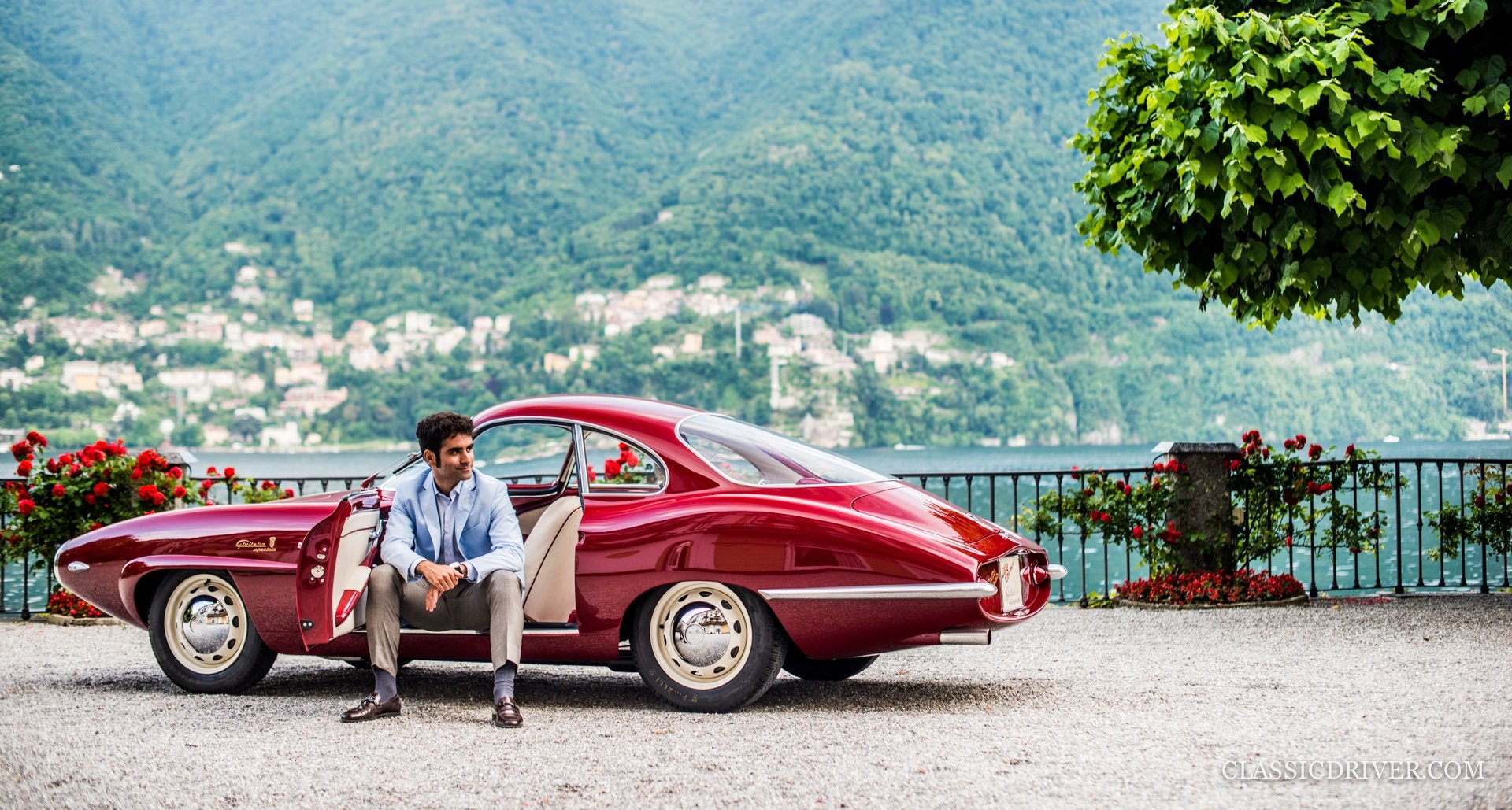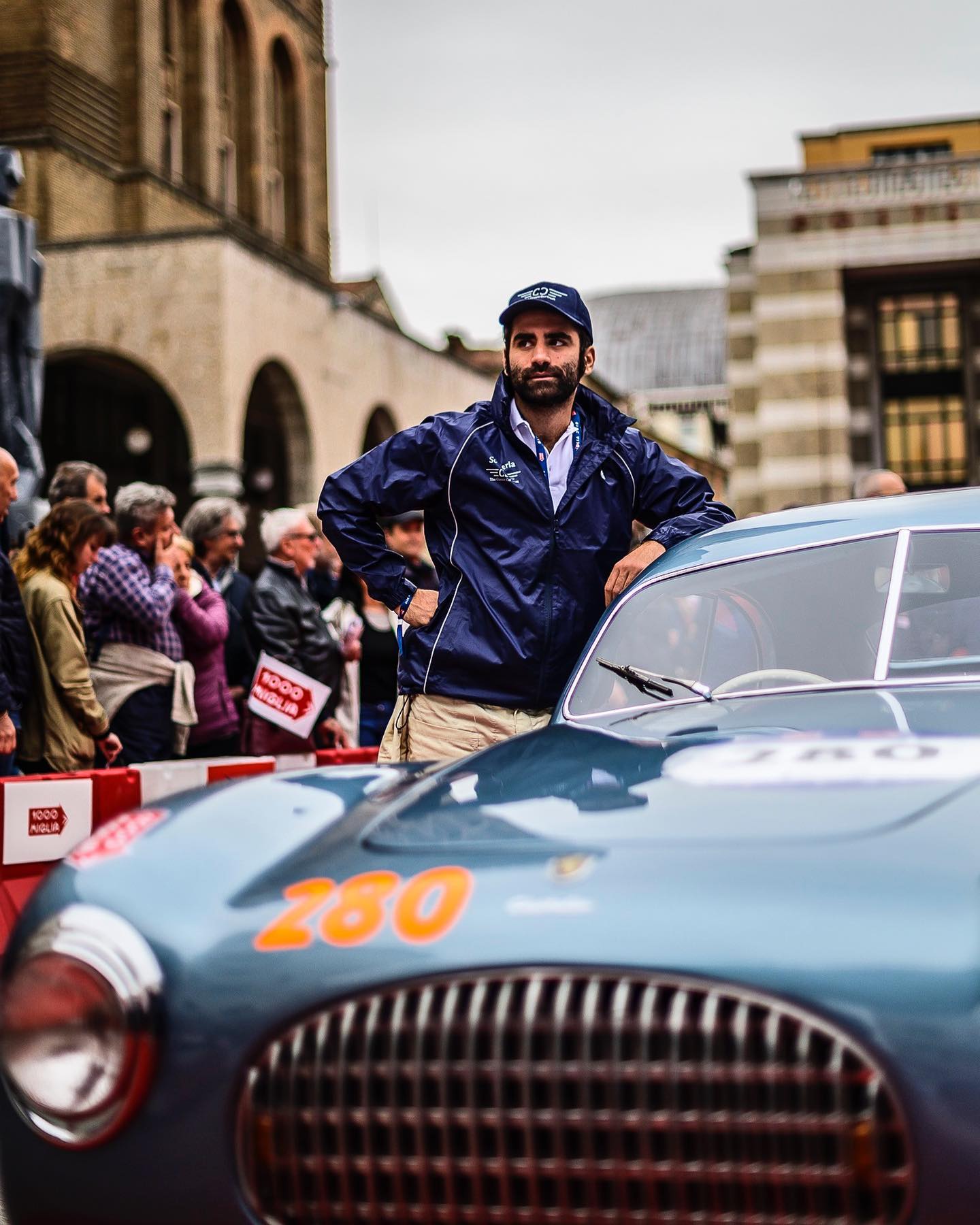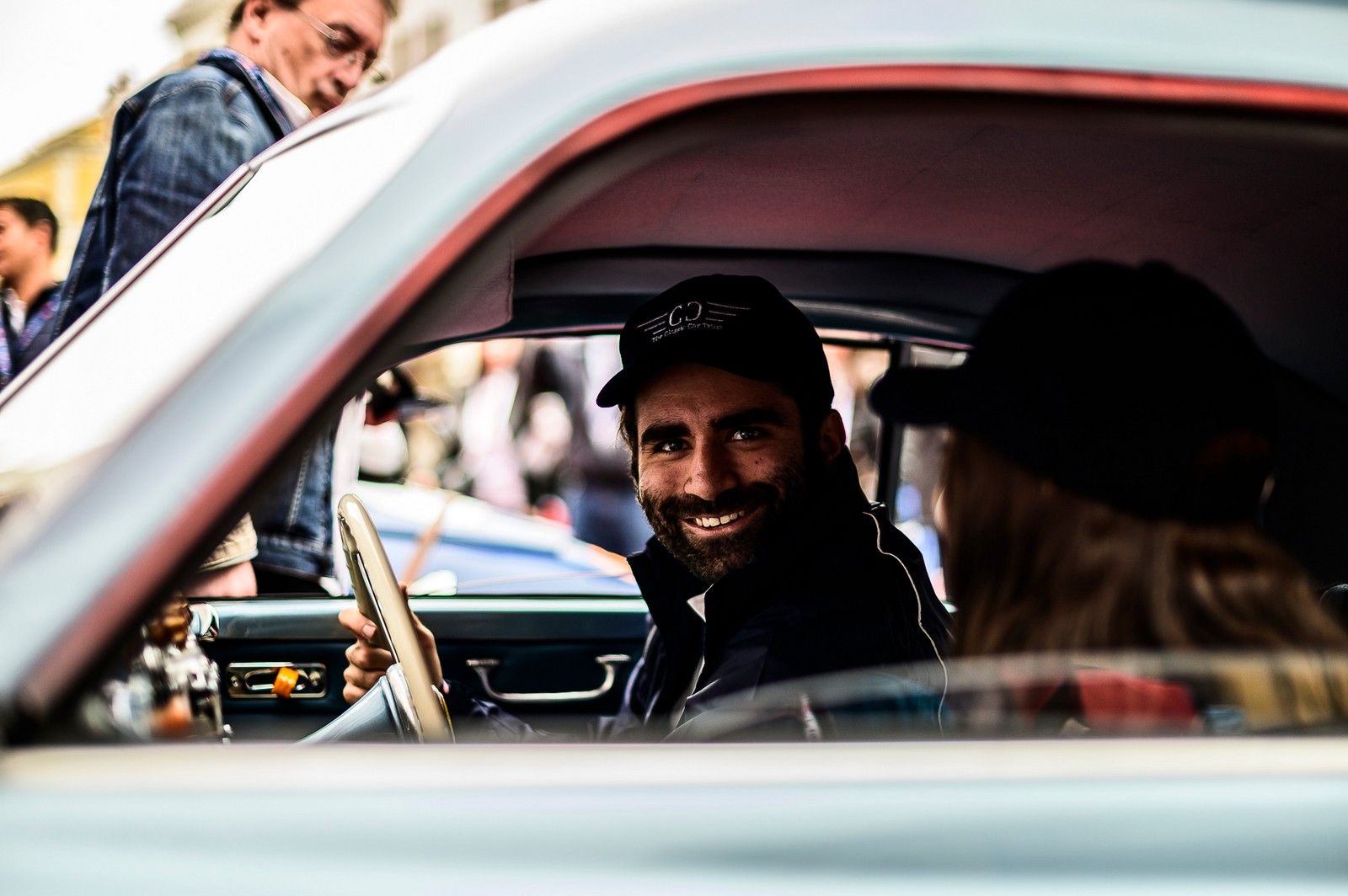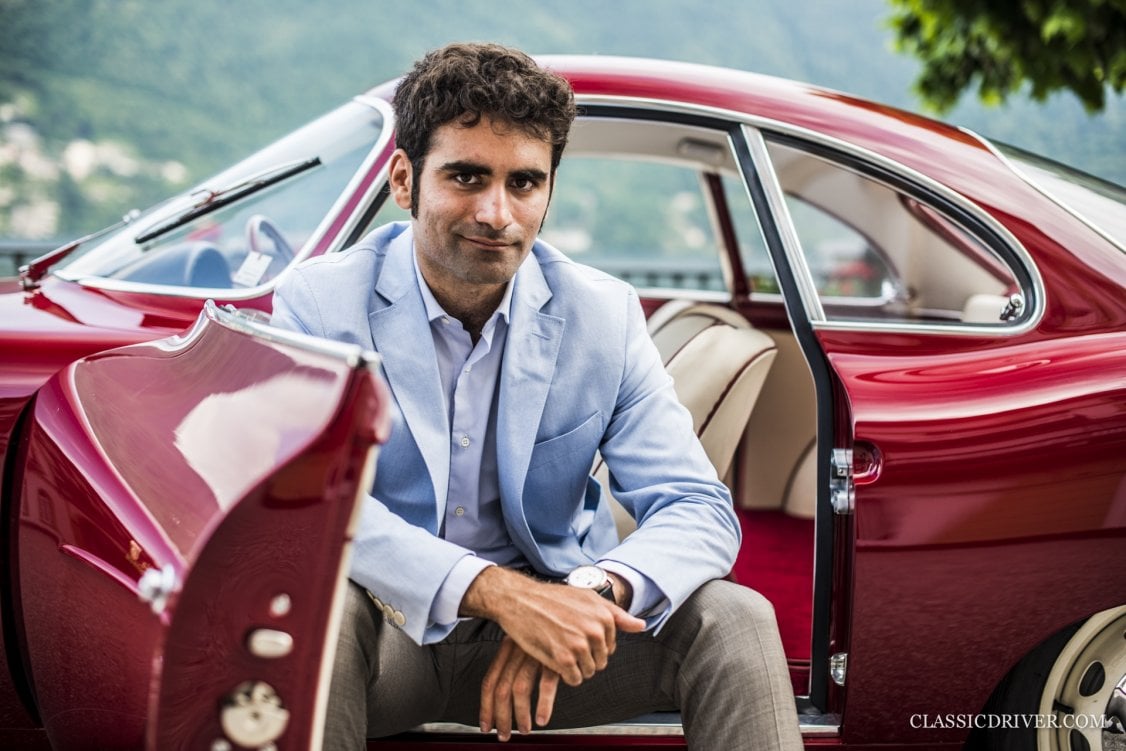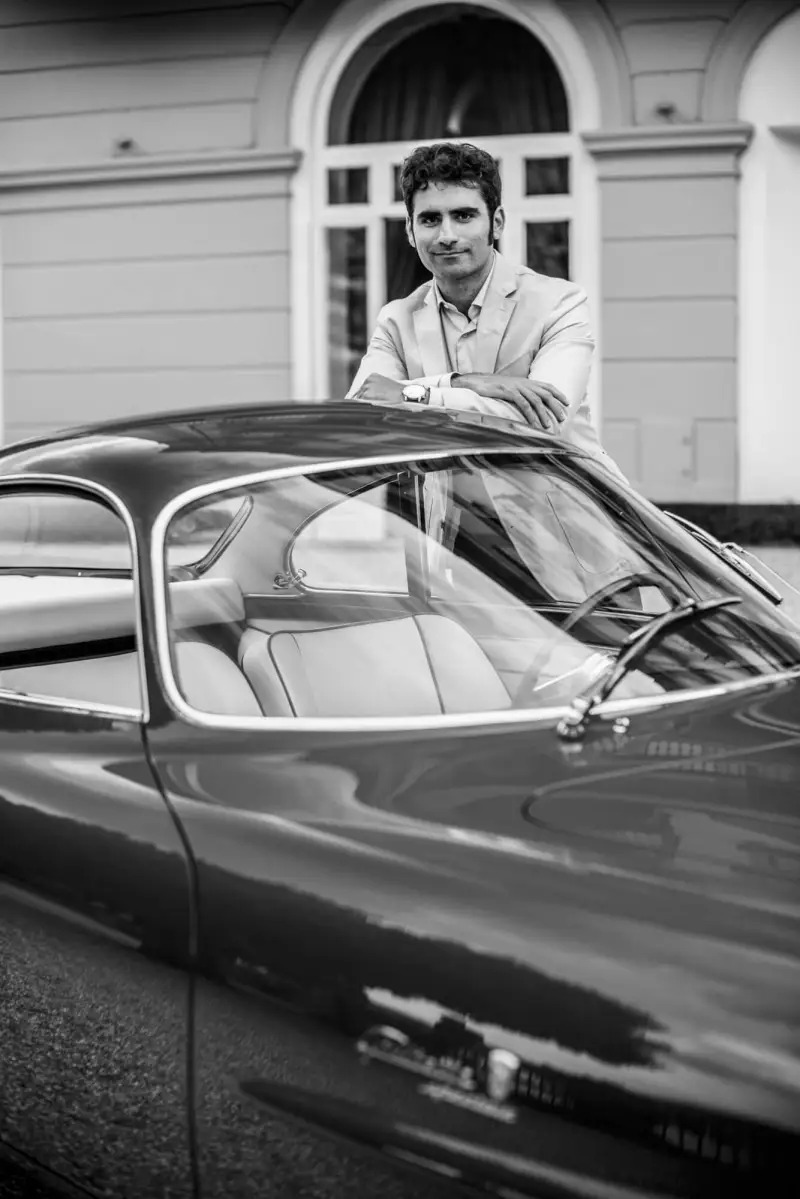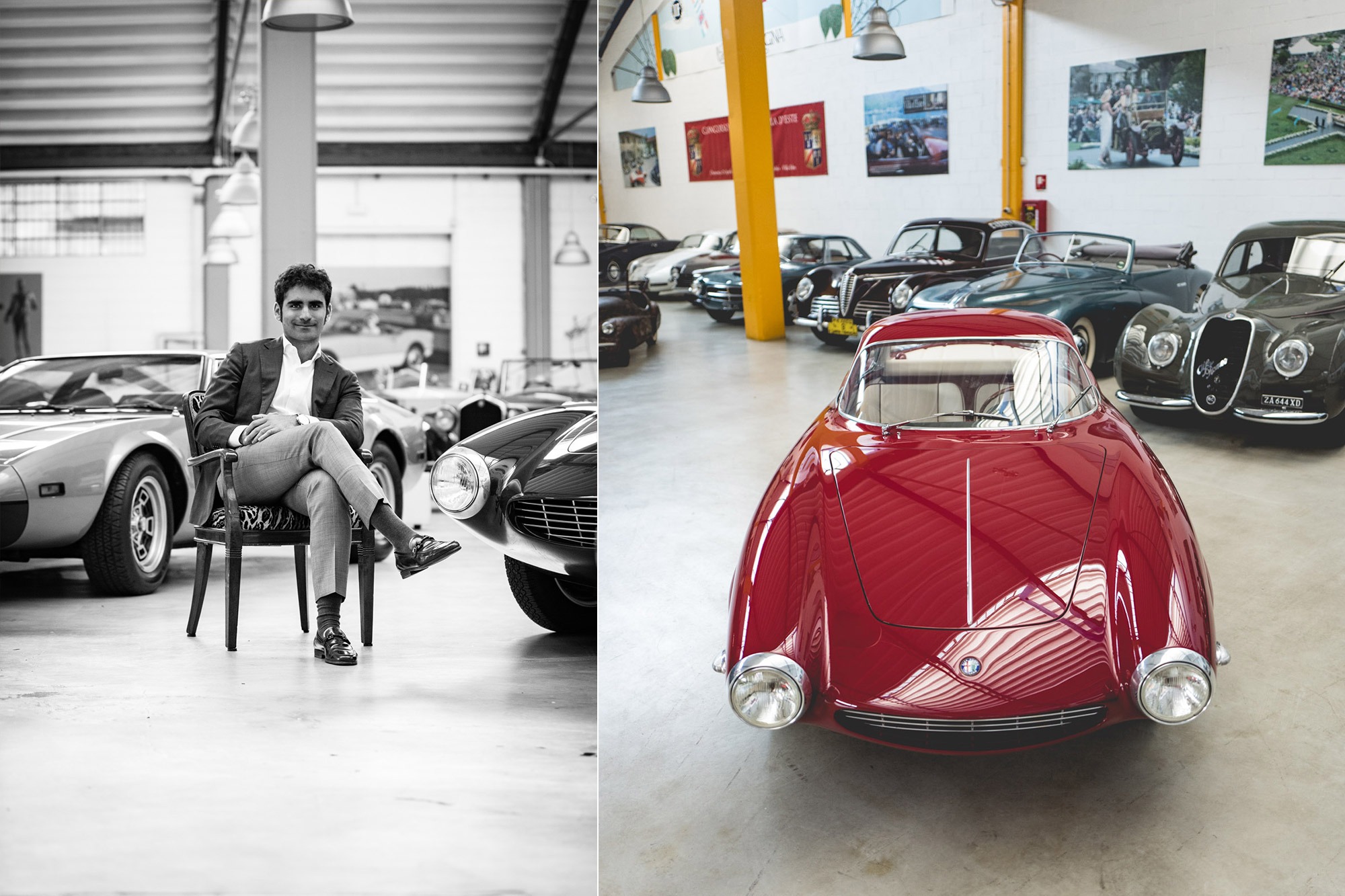Duccio Lopresto comes from a family that has left its indelible mark on the world of classic cars. From an early age, he drank in the legacy of his illustrious father Corrado Lopresto. Following in his father’s footsteps, Duccio works every day to celebrate Italian genius and style, by undertaking philological restorations, organizing and promoting cultural activities around the world and helping other enthusiasts to develop their collections. Every car in the Lopresto collection has a story to tell. They are simply unique, custom built.
In this exclusive interview with Gentlemen Drivers Magazine, Duccio Lopresto talks about his career, his passion and the challenges of managing the world’s largest collection of Italian cars.
Discovering the captivating story in PDF
What are your earliest memories of cars, and when did you first become interested in your father’s cars?
My earliest memories of cars go back to my childhood. I remember at the age of 4 or 5, I was asleep clutching a red Porsche 356 that my father had given me (it’s amazing, it wasn’t Italian, but it was red all the same!) I always followed my father to various races. I remember attending a RIAR (Registro italiano Alfa Romeo) rally when I was 5 or 6. Then, of course, the first year at Villa d’Este, in 2001, when I was 9. It was the first time we’d taken a car there and we won the Coppa d’oro! An indelible memory that I’ll never forget. Then I remember accompanying him to all the restorers in Italy: it was there that I learned all the secrets of the trade, but above all that I began to appreciate the beauty and design of the car as an object of art. I also remember all the trips we took in my youth across Europe: Germany, England, France, Spain and so on. I was like a suitcase for my father, always with him! The good thing is that he never pushed me into this passion. I picked it up naturally.
What are your favourite cars in the Lopresto collection and how do you spend your time looking after them?
It’s difficult to pick up a favorite car in our collection, because they are all unique and special. The collection is one of unique pieces. If I had to choose a few, I’d say the 1957 Giulietta SS prototype. This car, designed by the great Franco Scaglione for Bertone, represents a crazy evolution in the world of car design. It can be considered the road version of the marvelous Alfa Romeo BATs, cars that made history with their futuristic and revolutionary design in the 1950s. It has a special, characteristic Scaglione line, a fluid, harmonious design with studied, super-efficient aerodynamics. It was one of the first 4-cylinder cars in the world to reach 200 km/h… You should hear the sound the 4-cylinder makes! I have a particular fondness for it because we won Best of Show at the Concorso di Villa d’Este in 2017, a crazy achievement for a 4-cylinder car. Another car in the collection that I love is the Lancia Florida Prototipo 2 Porte by Pininfarina. This is a car that completely revolutionized Italian and international design. The design of the ‘Florida’, characterized by straight lines and sharp edges, was to influence the world of car design for the next decade, ushering in a new generation of cars that abandoned the rounded lines of the 1950s, in favor of the chunky shapes of the 1960s. My third choice is the Lancia New Stratos Stola 2000. A car that looks like something out of a science fiction film. The S81 was created as a styling study by Stola, a company specializing in car development, for presentation at the 2000 Turin Motor Show. The idea was to create an heir to the legendary Lancia Stratos. The task was entrusted to the same Marcello Gandini, the father of the original Stratos, who had already proposed a possible evolution of its design in 1978 with the Sibilo. The S81 is clearly reminiscent of the Stratos in its wedge-shaped lines, with its massive rear end and low nose with protruding wings. However, everything is more muscular and naturally modern: this is the case of the front headlights, which are very different from the originals, and the cut-out of the windows. The design of the rims is very special. An incredible piece of design from the early 2000s.
Do your taste in cars differ from your father’s?
My taste in cars is a mixture of my father’s influence and my own personal preferences. I’m drawn to the beauty of the masterpieces that have shaped Italian and world car design. While I have a great affinity with Italian designs, I also have a great appreciation for the work of international brands and artists. The post-war period in Italy, particularly the 1950s and 1960s, stands out as a golden age of creativity, with renowned manufacturers and designers such as Bertone, Pininfarina, Ghia and many others. The Art Deco period of the 1930s also holds a special place in my heart, with a particular affection for the creations of Figoni and Falaschi and iconic cars such as the Talbot Lago Tear Drop. I’m also passionate about concept cars from the 1970s, such as the Alfa Romeo Carabo, the Maserati Boomerang and the Lamborghini Marzal, which I consider to be true works of art. I am an enthusiastic admirer of visionary minds, whose genius has not only produced exceptional works, but also ushered in transformative eras, as if they possessed timeless foresight. What’s more, I have a deep appreciation of creations that emphasize the harmony of proportions, the elegance of simplicity and the pursuit of authentic beauty in its purest form. In this context, Pininfarina is unquestionably my favorite manufacturer. It has always adhered to a stylistic identity characterized by the pursuit of revolutionary yet elegantly simple design. In the words of one of my favorite designers, Leonardo Fioravanti, Pininfarina embodies the courage of simplicity, because simplicity demands the audacity to choose.
Do you have any innovative ideas for developing your father’s legacy, or do you want to stay true to his path?
I am committed to preserving and maintaining the core values that define the essence of the Lopresto collection and the brand we have painstakingly built over the years. These values include brilliance, elegance, Italian style and culture, a deep respect for history and a commitment to innovation. My father spent four decades creating a collection that is now a global benchmark for Italian automotive design.
As an extension of his legacy, there are many facets that I am determined to continue, such as the meticulous maintenance of the collection, its worldwide promotion through culturally significant exhibitions and the provision of consultancy services to major collectors on restoration and historical research projects. Our collaborations with various brands, our active participation in events and much more will also continue.
At the same time, my vision is to steer the Lopresto brand towards innovation and extend it beyond the realm of pure automotive heritage. I intend to venture into collaboration with the worlds of fashion and luxury, adopting a younger language to engage with new generations through modern and innovative projects. The aim is to breathe new life into Lopresto, shining a different light on it. This company is undoubtedly a challenge, but I believe the foundations are solid, allowing us to aspire to create something new and extraordinary in the field of design and the automobile.
Tell us about your exceptional Alfa Romeo Giulietta SZ Coda Tronca Prototipo. What is the history of this car?
The SZ Coda Tronca, which follows on from the Giulietta Sprint Zagato, a rare model designed to improve the Giulietta’s speed thanks to an aerodynamic aluminum body, was born of the collaboration between designer Ercole Spada and coachbuilder Elio Zagato. They were inspired by the concept of the coupé tail of the pre-war aerodynamicist Wunibald Kamm. To experiment with this idea, they took a Zagato Sprint, chassis number 00170, and extended the bodywork behind the rear wheels, testing different shapes on the Autostrada between Milan and Bergamo.
It is one of the most historically important cars in our collection, for what it represents. Rather than undertake a complete restoration of the car, we concentrated on the missing components, as the vehicle was exceptionally well preserved. Our approach was to apply restoration and preservation techniques generally found in the world of fine art. This was a revolutionary car, that deserved revolutionary preservation.
We managed to recover the original paintwork and preserve the authentic Plexiglas, which differed considerably from the modern materials of the 1960s, which had a thicker, coarser texture. The interior was also carefully preserved, with repairs to all the snags and reupholstery work under the cushions. In fact, we treated it with the same meticulous care as the Mona Lisa.
At Villa d’Este, my father decided to display the car by cleaning only half of it, leaving the other half exactly as we had found it, with its original dirt and dust. It was our way of presenting our unique approach to conservation to the world. Our unconventional preservation methods were recognized with a UNESCO FIVA award at Concorso d’Eleganza Villa d’Este, in 2016.
What does the Best of Show award at the Concorso d’Eleganza Villa d’Este in 2017 represent?
This award is of profound significance to us, as it represents the culmination of years of unwavering dedication, research and meticulous restoration efforts. We have been privileged to work with one of the world’s most renowned restorers, Dino Cognolato, who is recognized as the best in Europe and perhaps in the world. Remarkably, we were able to preserve 90% of the original aluminum and meticulously reconstruct the car’s history.
The judges recognition is a testament to this tireless effort and to the breathtaking beauty that has emerged from this painstaking process. Villa d’Este therefore occupies a special place in our hearts. It is a harmonious fusion of various factors, that contribute to its unique appeal. The location, with Lake Como as a backdrop and the most exclusive and opulent hotel in the world, is an unbeatable combination.
But it’s the cars that make Villa d’Este exceptional. Every year, this event is a rare and esteemed meeting place for the most elegant and exquisitely crafted automobiles. The emphasis on elegance and design is what sets Villa d’Este apart. The vigilant selection committee consistently excels in its choice of cars.
What is your vision for the Lopresto Collection?
My vision for the Lopresto Collection goes beyond the world of cars, because we want to have a profound impact in the fields of art and culture. The recognition we received from UNESCO at Villa d’Este in 2016 testifies our aspiration to transform our collection into a center of timeless, world-renowned cultural heritage.
Our aim is to break down the barriers that traditionally separate art and motoring, making these extraordinary machines accessible to a wider audience. This vision came to fruition with a moving exhibition at Milan Design Week, an innovative example of our commitment to highlighting the synergy between art and automotive craftsmanship.
In addition, our ongoing restoration projects and discussions with museums around the world are helping to raise the profile of these remarkable vehicles on a global scale. We are keen to work with museums to organize exhibitions showcasing our collection, in order to extend our reach and influence.
The future of the Lopresto Collection is bright and will go beyond the boundaries of mere collecting. As the torchbearer of the incredible legacy my father began, I accept the honor and responsibility of continuing this remarkable journey. I look forward to the opportunity to contribute to the preservation and celebration of these automotive and cultural treasures.
What was your greatest driving experience behind the wheel of one of the jewels in your collection?
Taking part in the Mille Miglia was an extraordinary and unforgettable adventure, that left an indelible mark on my life. It was an intense and exhausting experience, but it was also deeply fantastic. Two aspects of the event left a deep impression on me. Firstly, the passion and happiness of the people along the route exceeded all my expectations. I felt as if I’d known them all my life, as if each person was my closest friend. The genuine camaraderie and support of the spectators was touching and made the journey even more special. One particular moment in Tavullia, the birthplace of the legendary Valentino Rossi, remains etched in my memory. Around fifty children cheered and smiled at us as if it was the happiest day of their lives. Their infectious joy was a heart-warming reminder of the positive energy that the Mille Miglia brings to the communities it passes through.
Then there was the remarkable car we were privileged to drive – a unique 1931 Alfa Romeo 1750 Aprile, adorned with many prestigious awards, including the coveted Coppa d’Oro at Villa d’Este. If the car’s awards were already impressive, driving it in the Mille Miglia took the experience to a whole new level. At first, I felt a mixture of fear and embarrassment, as it was a real vintage gem. However, after a few hours behind the wheel, I felt completely at ease. The bond that formed between me and the car was inexplicable. Driving this masterpiece for ten hours a day was not just a privilege, it was an absolute joy, a transformative experience that left an indelible mark on my life.
How do you think we can get young people interested in the world of car collecting?
Engaging the younger generation in the world of collecting requires a multi-faceted approach. The first is to increase inclusivity and accessibility, by making collecting a more attractive activity. This may involve exhibiting more contemporary cars, as recent events such as Villa d’Este and Hampton Court have shown. It is essential to speak a language that resonates with young people and to bridge the gap between pre-war cars and their interests, presenting them as works of art rather than just vehicles.
Museum exhibitions can play a vital role in this endeavor. Norman Foster’s remarkable car exhibition at the Guggenheim Museum in Bilbao is an example of how beauty, design and culture can be shared with a wider audience. Dynamic, less static events are another avenue to explore, given that younger generations are constantly on the move and need engaging, interactive activities.
Finally, in the age of social media, it is imperative to adapt to the digital world, using these platforms to communicate stories in a youthful and dynamic way, in order to effectively capture the attention and imagination of the new generation.
You joined RM Sotheby’s in 2021 as Director of Business Development for Europe. Why did you do this?
In 2021, RM Sotheby’s asked me to take on the role of Business Development Director for the EMEA market, a challenge that I took up with enthusiasm and joy. We are proud to be the world’s leading auction house, not only in terms of brand recognition, but also in terms of total sales volume and average value of cars sold worldwide.
My responsibilities include growing the business by identifying emerging trends, seizing new commercial opportunities, developing innovative customer engagement strategies, entering new markets – as illustrated by our successful launch in the Middle East in 2022 – forging lasting partnerships with like-minded brands and overseeing the strategic expansion of our business in these markets.
This is a demanding role, given the intense competition, but it is vital that we maintain our leadership position. The results speak for themselves, as 2022 was a record year for us. One of the greatest achievements of my career was being part of the team that orchestrated the sale of the Mercedes Benz 300 SLR Uhlenhaut, the most expensive car ever sold, directly from the Mercedes Museum. What’s even more remarkable is that all the proceeds were generously donated to charity, making it a truly exceptional achievement.
How would you assess the evolution of the classic car market?
The landscape of the classic car market has changed radically in recent years. In what can only be described as an evolutionary change, it has moved closer to the art world, supported by a more organized and structured commercial ecosystem. This transformation is not simply a short-term trend, but rather a significant, long-term transition, that is redefining the way classic cars are bought, sold and valued.
As this transition continues, it is clear that there is still a long way to go, marked by new developments and decisive changes. Over the next decade, we can expect substantial changes and innovations that will further shape the classic car market. These changes are likely to impact on various aspects of the industry, including how collectors and enthusiasts engage with classic cars, how they are valued and insured, and the role of classic cars as an investment and a source of cultural and historical significance.
In this evolving ecosystem, the classic car market is poised to undergo transformations that may include the use of advanced technologies for appraisal and authentication, more comprehensive historical research and documentation, and increased attention to preservation and restoration as part of efforts to conserve this cultural heritage.
In addition, the market will continue to adapt to the preferences and interests of a new generation of collectors and enthusiasts, whose values and goals may differ from those of previous generations.
In summary, the classic car market is constantly evolving, and, over the next ten years, we can expect a series of profound change, that will influence not only the commercial dynamics, but also the cultural and historical significance of classic cars in our world.
Creating electronic dance music is another of your passions, and you’ve released several albums. Can you tell us more about them?
Music has always been an important part of my life and one of my greatest passions. Although I’ve never mastered a specific musical instrument, my fascination with music began during my school years, when I immersed myself in its study. However, it was in 2011 that I discovered a deep passion for electronic music. This new enthusiasm led me to become a DJ, performing in various London clubs, and then venturing into the world of electronic music composition.
In 2012, I took an important step by founding my own label, ‘Three Fingers Musique’, which has become a platform for distributing my music. Over the years, my musical creations have found a home on several international labels, with my most recent release, dating back to 2022. My journey into music production and creation has been a rewarding and constantly evolving experience.
In addition, I’ve extended my involvement in the music scene by launching a series of events known as OINIMOD here in London. These events are designed to offer high quality, intimate and exclusive underground experiences, adding a unique dimension to the city’s vibrant music culture.
In addition, you can catch my musical performances at some automotive events, including the upcoming RM Sotheby’s auction in London, where I will be hosting a DJ set at the preview.
Biography:
2013: starts career as Sales & Marketing at Hagerty (U.S.)
2015: Bachelor of Science in Economics and Econometrics from City, University of London.
2016: Master of Science in Economics and Finance from the Barcelona School of Economics.
2017: joins Lamborghini S.p.a. in the Business Strategy & Product Marketing team as Business Development Manager for the Italian brand.
2018: starts as a shadow judge at Pebble Beach, then becomes an official judge at the Audrain Concours d’Elegance.
2021: joins RM Sotheby’s as Business Development Director for Europe.









